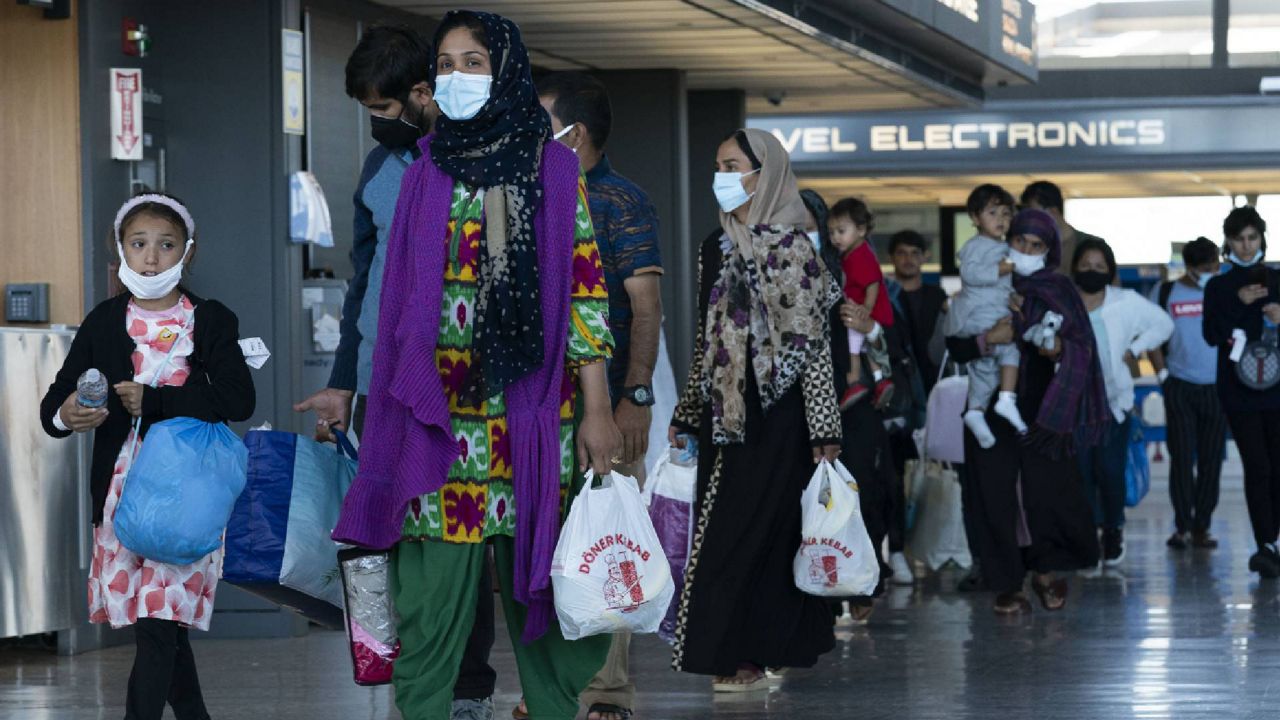The Biden administration is now planning to welcome up to 95,000 Afghans to the United States in the next year, after a massive airlift from Afghanistan last month of tens of thousands of people, with more expected to leave the country through 2022.
It’s the first time officials have put a complete estimate on the initial number of Afghans that could reach the U.S. after the withdrawal, with 65,000 expected by the end of September and another 30,000 in the year after.
The Office of Management and Budget first announced the numbers Tuesday as it requested an additional $6.4 billion in funding from Congress for the continued Afghan evacuation and resettlement.
“It is a reflection of the commitments we have made to helping relocate those who worked alongside us and those still in Afghanistan,” a spokesperson for the National Security Council told Spectrum News.
The administration had previously announced that military bases could house up to 50,000 Afghans as they arrived in the United States.
But the total number that could arrive by the end of fiscal year 2022 is closer to 95,000, a figure determined through an interagency process overseen by the National Security Council, an official told Spectrum News.
As of Wednesday, there were already about 49,000 Afghans who had reached the continental U.S., many of whom first went to military bases for medical checks and other processing.
Biden administration officials said the number of people coming from Afghanistan will not count toward the refugee cap, though the number is close to the annual historical average of refugee admissions.
“In terms of admitting refugees, this is about where Republican and Democratic administrations have been,” said Yael Schacher, a senior U.S. advocate for Refugees International.
Biden raised the refugee cap to 62,500 for the fiscal year ending on Sept. 30, but only about 7,000 spots have been used.
All Afghans who reach the U.S. are vetted prior to arrival, officials confirmed.
“We are surging resources to evaluate each case and process these as efficiently as possible to protect homeland security,” an NSC spokesperson said.
Schacher said the resettlement of large groups of refugees in a short amount of time doesn’t happen often, but it’s not an unusual effort for the U.S. government, giving the examples of the Mariel boatlift from Cuba in the 1980s and the evacuation at the end of the Vietnam War.
“We've come up with ways of, when we have sort of an emergency situation, adapting our refugee system,” Schacher said. “Congress and the administration have sort of cobbled together different strategies to dealing with situations like this. And nothing that's being proposed right now is completely new.”
For now, the majority of Afghans who reach the U.S. will be given protective status under something called “humanitarian parole,” which allows them to work and live in the U.S. without permanent residency.
Typically, parole does not allow immigrants the same benefits as refugees, but the Biden administration requested in its short-term funding proposal to Congress that Afghan parolees are eligible for the same services, such as food stamps and health insurance.
The budget request would also allow Afghans who remain in the U.S. with parole status to apply for permanent residency after one year.



